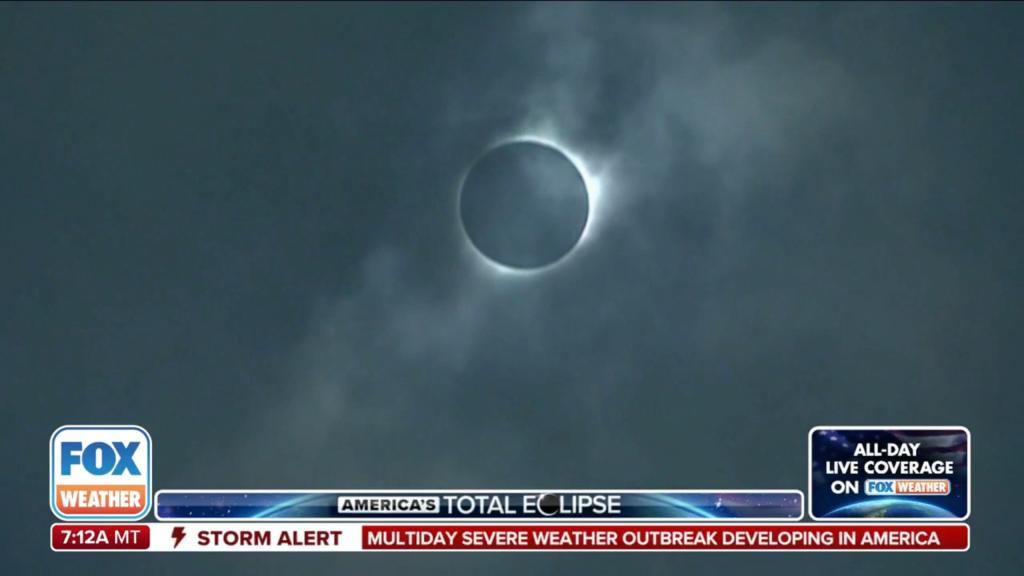Meteorologists are warning that cloudy skies may obstruct views of the solar eclipse on April 8 for many viewers in the zone of totality, which stretches from Texas to Maine. Fox Weather meteorologist Dax Clark emphasized the importance of clear skies for viewing the eclipse, with areas further inland such as Ohio and Indiana potentially facing cloudy conditions. If obscured by clouds, viewers may miss out on important stages of the eclipse such as first contact and the diamond ring before totality, when the sky darkens as if it were night.
Skywatchers on the East Coast, including New York, may have better luck with viewing conditions. Upstate New York is trending towards clearer skies, particularly from Syracuse to northern Vermont and Maine. On the other hand, areas further west towards Buffalo and Detroit are predicted to have cloudier conditions. The regions with the highest chance of sunny skies include Dallas, Arkansas, Missouri, and southern Illinois. However, Clark mentioned that long-term forecasts can be unpredictable and may change leading up to the event.
Clark advised people within driving distance of the zone of totality to wait until the day of the eclipse to decide where to view it, as forecasts can fluctuate up until the last minute. In 2017, solar eclipse viewers in South Carolina had to quickly relocate to find clear skies just before the total eclipse. Being flexible and prepared to move to a better viewing location if needed is crucial, as the eclipse is a short-lived event lasting only a few minutes. Protective glasses will also be necessary to safely view the eclipse, even if the sun is hidden behind clouds.
Overall, more than 30 million Americans are expected to witness the solar eclipse on April 8, with hopes for clear skies to provide optimal viewing conditions. Early forecasts indicate that some areas in the zone of totality may experience cloudy conditions, but there is still potential for the weather to change closer to the event. Skywatchers on the East Coast have a better chance of clear skies, while those further inland and towards the Great Lakes region may face cloudier conditions. The unpredictability of long-term forecasts highlights the need for flexibility in making last-minute plans to view the eclipse.
As the solar eclipse approaches, viewers are encouraged to have protective glasses on hand and to monitor weather updates to determine the best viewing location. Being prepared to relocate to areas with clearer skies if needed is recommended for those hoping to witness the celestial event. While there is uncertainty surrounding the weather conditions for the eclipse, there is still hope that viewers across the United States will be able to experience this rare astronomical event.















